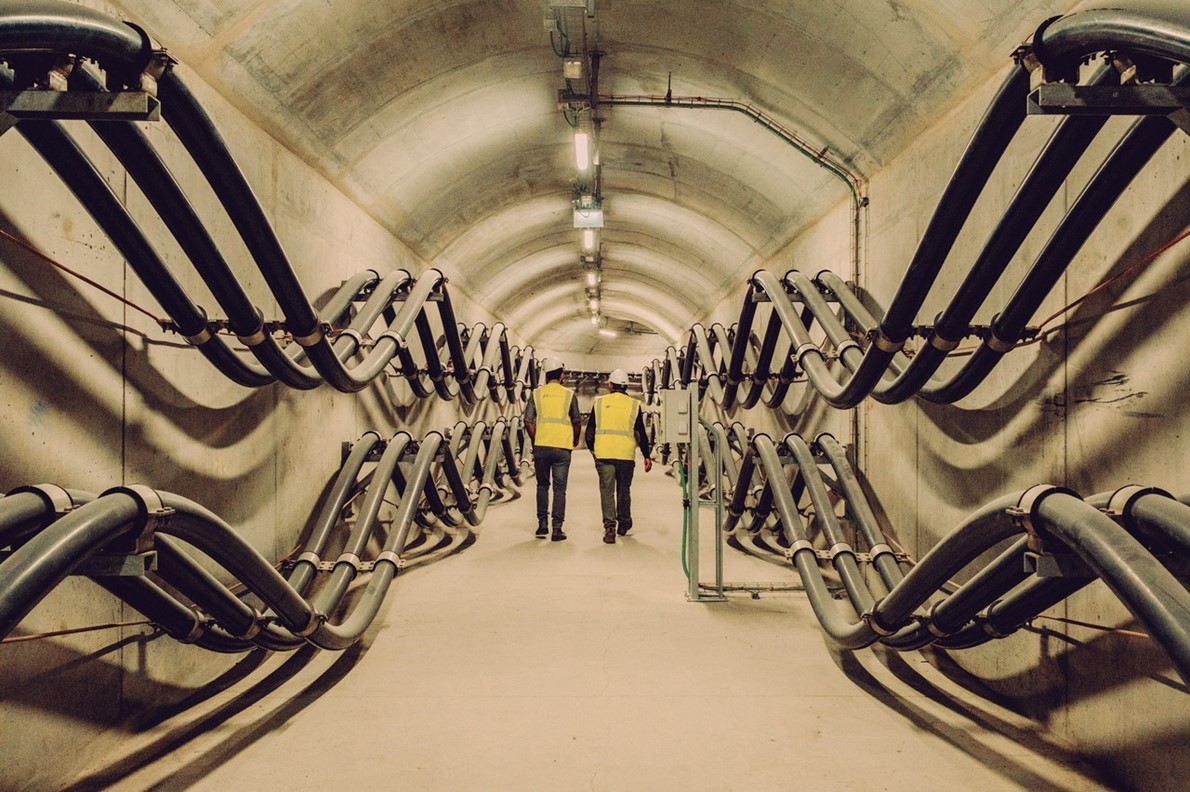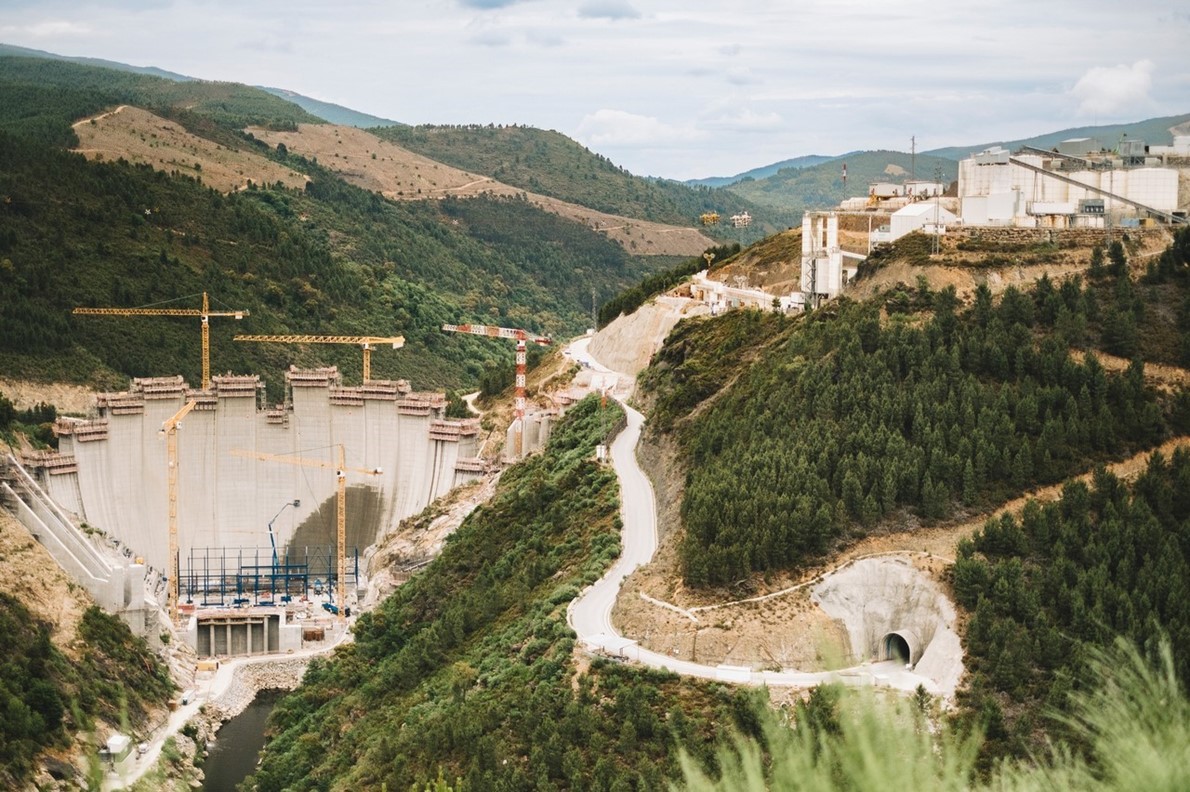RIBEIRA DE PENA, Portugal — When
Portugal’s electrical system needs a boost, a signal activates a power plant
buried deep in a hillside in the country’s scrubby, pine-covered north. Inside
the human-made cavern, valves, nearly three meters in diameter, suddenly open,
allowing water draining from a reservoir 6.5km away to begin streaming through
four massive turbines.
اضافة اعلان
Up close, the spinning turbines make an
earsplitting din. At full power, they generate enough electricity to rival a
nuclear reactor.
This is the heart of a vast hydroelectric
project that is reshaping a rugged river valley about 100km east of Porto,
Portugal’s second-largest city after Lisbon. Besides the underground power
plant, Iberdrola, the Spanish energy giant, has built three dams in the area —
two on the Tâmega River and one on a feeder stream — and the three resulting
reservoirs sprawl over nearly 10 square kilometers.
“This is my pyramids,” said David Rivera
Pantoja, the project manager, who has been working on the project for almost 15
years.
 Electric
cables underground at the power plant for the Tâmega complex near Ribeira de
Pena, Portugal, in August 2022.
Electric
cables underground at the power plant for the Tâmega complex near Ribeira de
Pena, Portugal, in August 2022.
But the 1.5 billion-euro ($1.6 billion)
complex of concrete, tunnels and water is not just massive. It is also
providing an answer to one of the most vexing questions facing renewable
energy.
Hundreds of billions of dollars are being
spent across the globe on solar energy and wind power. But when the sun goes
down, or the breezes become still, where will the electricity come from?
Iberdrola’s giant project — which uses water and gravity to generate power on
demand, and then pumps the water back to the upper reservoir when rates drop —
is part of the solution.
The concept of storing energy in the form
of water on top of a mountain has been around for more than a century, but
interest waned in the 1990s, when plants burning natural gas became the go-to
source for on-call power, shaving the price differences between peak and
off-peak power.
Now, however, a kind of global renaissance
in the technology, known as pumped storage, is taking place.
Finding the ‘balance’ to solar and windWhat has changed in countries such as
Portugal is the rapid growth of clean sources of power such as wind and solar
farms. While these technologies churn out electric power free of greenhouse gas
emissions, they generate an energy stream that is less steady than a
traditional power plant fueled by coal, natural gas, or a nuclear reaction.
The ongoing shift to renewable power
sources and away from fossil fuel plants is creating a need for other sources
of electricity that can help bridge the gaps.
Up close, the spinning turbines make an ear-splitting din. At full power, they generate enough electricity to rival a nuclear reactor.
“You can’t have just solar and wind,” said
Fabian Ronningen, an analyst at Rystad Energy, a consulting firm. “You need
something to balance.”
Tapping a reservoir and using its water to
spin underground turbines allows engineers to create renewable energy on demand.
The rise and fall of the dammed water serve as visible markers of the process
taking place.
A facility such as this one on Portugal’s
Tâmega River stores energy in the form of water when the wind is blowing hard
or on sunny days, and then lets it flow, generating electricity and causing the
water level in the upper reservoir to fall, when energy is less abundant and
more expensive.
It is like a huge battery, but one that
produces far more electricity for a longer duration than the large electricity
storage facilities used for similar purposes. And reversing the flow of the
turbines to pump the water back up the tunnel lets it be recharged endlessly.
 David
Rivera Pantoja, left, the project manager, and José Manuel Otero Zarauza, one
of the main engineers, for the Tâmega complex near Ribeira de Pena, Portugal,
in August 2022.
David
Rivera Pantoja, left, the project manager, and José Manuel Otero Zarauza, one
of the main engineers, for the Tâmega complex near Ribeira de Pena, Portugal,
in August 2022.
Iberdrola executives say plans by
governments in Europe and elsewhere to increase wind and solar energy mean more
demand for facilities like the one on the Tâmega.
Pumped storage plants can also provide, in
essence, energy insurance to install even more sources of clean power
generation, aiding the effort to tackle climate change, analysts say.
Iberdrola, for instance, plans to install a large wind farm nearby.
Because pumped storage plants are so useful
for keeping a power grid humming, they are finding favor in many countries,
including China, India and Australia. Several proposals are also making their way
to reality in the US.
But projects this large also bring
substantial downsides. In Europe, the scope for building such huge facilities
may be limited by high costs, long lead times, and opposition from
environmentalists and local residents objecting to flooding river valleys. And
the flooding from dams can hurt the riverine habitats of fish, birds, and
plants and inundate antiquities.
Hundreds of billions of dollars are being spent across the globe on solar energy and wind power. But when the sun goes down, or the breezes become still, where will the electricity come from?
In addition, the better sites already have
dams on them, so it was quite unusual for such a large complex as the Tâmega to
go ahead in a western European country. “This was quite an exceptional
project,” said Martin Burdett, news editor of the International Journal on
Hydropower and Dams. And the construction work is not yet complete.
Hollows, caverns, and underground turbinesTo ensure enough water for the power plant,
even during droughts, Iberdrola built two dams on the Tâmega, about 9.5km
apart. These barriers will each have turbines so that they, too, can produce
electricity and revenue when water is released.
The company has also dammed a small river
that runs into the larger one, creating a third reservoir high on a plateau
about 600m above the valley. A 6.5-mile, 7-meter-wide water tunnel connects
this artificial lake to caverns hollowed deep underground where turbines and
other equipment are installed.
For most of its length, the tunnel is
level, but as it approaches the power plant, it begins dropping and finally
plunges vertically, creating tremendous water pressure. If all four turbines
are running, the water surges through at 42,000 gallons a second. High above,
at the reservoir, the water level slowly seeps lower. An hour’s release draws
down the level of the upper reservoir, which is about 30m deep when full,
around half a meter.
 The
Alto Tâmega dam under construction on the Tâmega River near Ribeira de Pena,
Portugal, in August 2022.
The
Alto Tâmega dam under construction on the Tâmega River near Ribeira de Pena,
Portugal, in August 2022.
Construction continues at the facility. One
of the dams, the Alto Tâmega, will not be completed until 2024.
The underground power plant, though, is
already operating. There, a team of technicians work in a subterranean world.
This facility has started to produce electricity while still undergoing final
adjustments.
So far, as a system that can reuse water,
it is proving more resilient at a time of drought than conventional dams.
Rivera says the facility ran almost flat-out in the fall, releasing water when
electric prices were elevated and sending it back when they dropped. The same
water went “up and down, up and down” all day, he said.
Iberdrola says that last summer’s severe
drought and low water levels at traditional dams increased the use of the
storage system. The company also says that periods of both high and low electrical
generation from wind and solar should increase demand to tap into the
reservoir. The more frequently the turbines are used, the more revenue they
will produce for Iberdrola, executives say.
“You can’t have just solar and wind… you need something to balance.”
The power plant is installed in a vast
cavernous space. Technicians in yellow vests and hard hats are sometimes
present to perform maintenance but are not required at all times. The turbines
are switched on and off from Madrid, where Iberdrola is based.
And so after 15 years, Rivera has almost
completed his monument. While countries such as Portugal may be running out of
places to build conventional dams, water is such a useful medium for storing
electricity that it seems almost inevitable that more of these centers will be
built.
But in the future there may not be many
more projects in Europe as huge as this one. Innovations are likely to reduce
water loss and make the facilities less destructive to the environment.
Burdett, of the International Journal on Hydropower and Dams, said existing
hydroelectric plants would be modernized to conserve water. He added that
depleted mine shafts and excavations near the sea were all being considered as
alternatives to damming up rivers.
Read more Odd and Bizarre
Jordan News



